Are you planning to base yourself in Inverness and explore the Scottish Highlands? Not sure what day trips to include in your itinerary? In this guide discover 13 of the very best day trips from Inverness for all interests.
Located in northern Scotland the highland capital of Inverness is perhaps most well known for being the gateway to the spectacular beauty of the Scottish Highlands. It is the perfect base from which to explore the Highlands with numerous options for day trips from Inverness.
In this article, we cover the best day trips from Inverness to suit a variety of interests (including some hidden gems). To help you plan your day trip out we have also included information about how to get there from Inverness whether that is by car, public transport (bus/ train) or a guided tour (including small group tours).
🚙 Considering a road trip around England/Scotland/Wales/NI? Not sure if you’re up to driving in the UK? We recommend using a Tripiamo guide to familiarise yourself with it before your journey. Previous UK Travel Planning users have said this has made them feel much more comfortable getting behind the wheel. Find out more in our guide to renting a car in the UK 🚗
13 day trips from Inverness
Culloden Battlefield
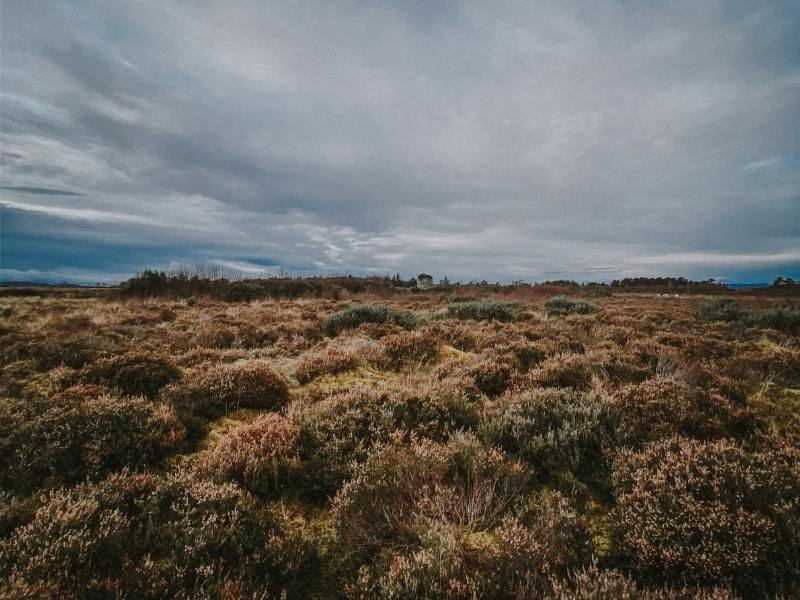
A top Inverness day trip for history lovers, Culloden Battlefield is one of the most significant historic sites in the Scottish highlands.
Step back in time for a journey through Scottish history as you stroll around the site of the bloody Battle of Culloden. Today grassy and bleak, it marks the spot where, in April 1746, the Jacobite uprising of 1745 came to a tragic end.
Markers show where significant events occurred on the battlefield, and there are memorial stones to the various clans that fought here. Do remember that Culloden Battlefield is also a war graves site so act respectfully while walking around.
You can also see the memorial wall and memorial cairn, as well as the reconstructed Leanach Cottage from the 18th century. There’s no charge to visit the outdoor areas.
To understand more about the uprising, led by Bonnie Prince Charlie, and the final battle, don’t miss the excellent visitor center. Understand the battle from both perspectives and learn how more than 1,600 people (some 1,500 of those being Jacobites) died on the battlefield in less than an hour.
As well as informative exhibits and artifacts, the centre features an immersive battle experience that puts you right in the heart of the action. Emotive and raw, it contains brutal scenes that may not be suitable for young children.
Managed by the National Trust of Scotland, entrance is free for members, £11 for non-member adults, and £9.50 for non-member children. The site is open daily between 10 am and 4 pm.
How to get to Culloden Battlefield
- By car: Around five miles east of Inverness city centre, Culloden Battlefield is a short drive along the B9006. Brown signs make the route even easier to follow. There’s plenty of on-site parking.
- By bus: Several bus routes connect Inverness city centre with Culloden Battlefield, including the direct Number 2 from outside Marks and Spencer.
- The journey takes around 35 minutes. Alternatively, you can catch services 10, 11, 34X, X99, or X28 from Inverness bus station and change onto the Number 2 bus.
- Culloden Battlefield is also a stop on the blue route of the Inverness hop-on hop-off city sightseeing bus.
Clava Cairns
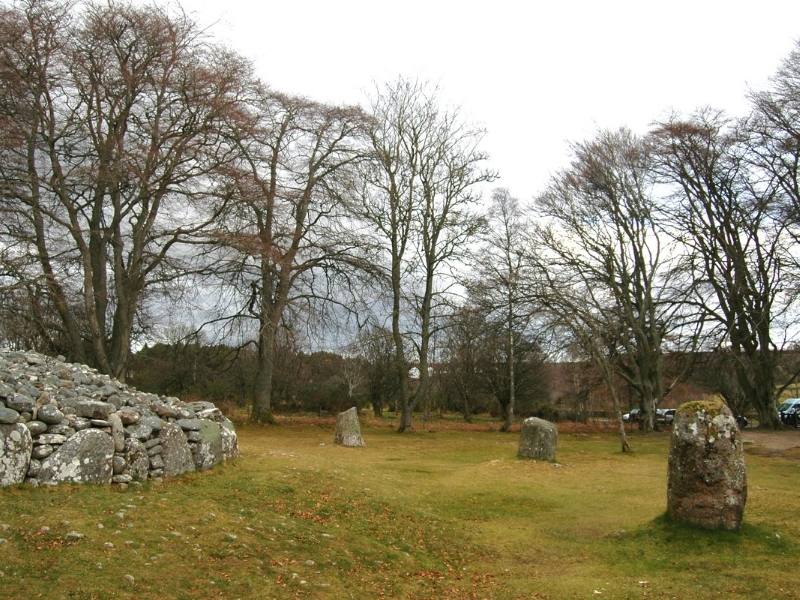
Located just 1.5 miles from Culloden Battlefield, the Clava Cairns are fascinating prehistoric ruins. Once part of a larger cemetery, the cairns are around 4,000 years old. Constructed to house the dead, the ruins occupy a scenic spot above the Nairn River.
Two sections of the ancient complex are open to visitors—Balnuaran of Clava and Milton of Clava—where you can see several prehistoric burial monuments, as well as the remains of a medieval church.
The site is managed by Historic Environment Scotland. It’s accessible 24/7 and there’s no admission cost. Combine with a visit to Culloden for one of the most popular day trips from Inverness.
How to get to Clava Cairns
- By car: Clava Cairns are easiest to access by private transport, and onsite parking is available. Around seven miles from the city, the drive takes around 15 minutes. The route is easy, primarily along the B9006, and signposts appear as you get closer.
- By bus: You can catch the Number 2 bus from outside Marks and Spencer in Inverness to Cumberland Stone (journey time of approximately 25 minutes) and then walk the remaining 1.2 miles (around 25 minutes). Alternatively, those who have hop-on hop-off bus tickets can catch the blue route to stop 3 (Culloden Battlefields) and walk to Clava Cairns in around 25 minutes.
- By tour: Glen Affric, Culloden and Clava Cairns Tour – Full day tour in a 16-seat Mercedes mini-coach.
Loch Ness
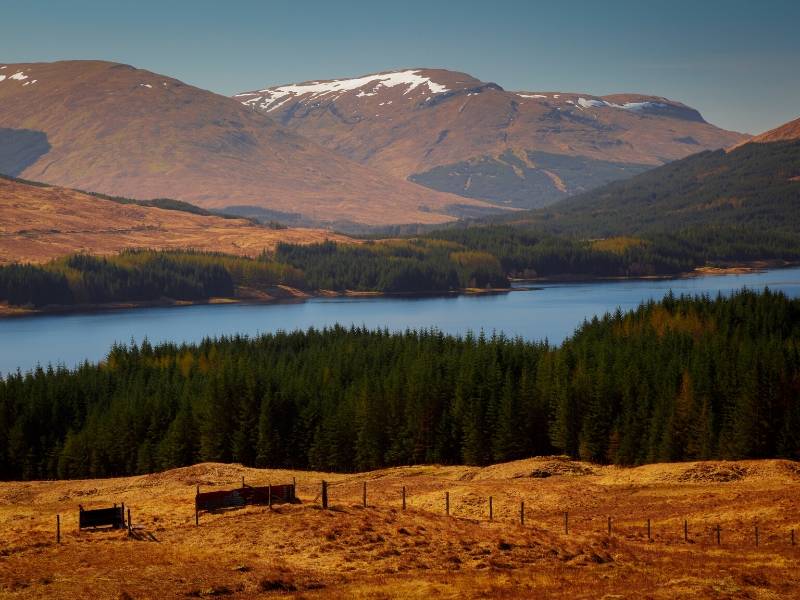
One of the most mysterious lakes on the British mainland, the depths of the shimmering Loch Ness are shrouded in myths and intrigue. Stretching for some 23 miles with cool viewpoints and attractions along both edges of the slender lake, and just a 20-minute drive from the city centre to its closest point, Loch Ness is one of the best Inverness day trips.
The most voluminous lake in the UK and fed by various rivers, water empties from Loch Ness along the Ness River (and Caledonian Canal) before reaching Beauly Firth. You can visit the small river islands—the Ness Islands—while exploring the city. Just a short walk from Inverness Castle, the three main islands are connected by bridges and covered in lush parkland.
People visit Loch Ness from far and wide, keen to try and spot the legendary Loch Ness Monster. Often referred to, almost affectionately, as Nessie, tales of a strange lake-dwelling beast have abounded for centuries.
Learn more about the legends, alleged sightings, hoaxes, and scientific explorations of the lake’s dark, gaping depths at the Loch Ness Centre and Exhibition. A series of short videos seek to explain some of the lake’s mysteries and provide plenty of food for thought. There are activities to keep younger visitors engaged too.
Entry costs £8.45 for adults and £4.95 for children up to the age of 15. Under 6s are free. The centre is open between 10 am and 5 am from April to October, and between 10 am and 3 pm during the rest of the year.
Take to the waters for fishing, monster hunting, or sightseeing on a Loch Ness cruise, relax on the pebbles of Dores Beach, and marvel at the 165-foot-high Falls of Foyers. You can also explore the magnificent Scottish scenery around the Great Glen, an 80-mile stretch of lakes, rivers, and forests between Inverness and Fort William.
Fort Augustus is a charming village at the southern tip of Loch Ness, home to the Caledonian Canal Heritage Centre and a mecca for hiking and cycling enthusiasts. The small village of Invermoriston, home to a gorgeous bridge and falls, is also worth a quick stop.
On the western edge of the lake, the atmospheric ruins of Urquhart Castle are another terrific stop during your day around Loch Ness. Managed by National Environment Scotland, there’s a small exhibition area where you can learn more about the site’s tumultuous past before exploring the ruined castle and soaking up the splendid vistas.
Admission is free for members of Historic Environment Scotland or £13 / £8 for adults and children respectively. Children under 5 go free. Between April and September, the castle is open from 9.30 am to 6 pm. October opening times are between 9.30 am and 5 pm and the castle is open from 9.30 am to 4.30 pm between November and March.
How to get to Loch Ness
- By car: Car is the easiest way to explore the various attractions around Loch Ness, and most major places of interest have a car park.
- Inverness lies eight miles to the north of Lochend (at the northern tip of the lake), and the A82 runs along the lake’s western edge, passing attractions like the Loch Ness Centre and Urquhart Castle and running through Invermoriston down to Fort Augustus.
- If you want to explore the lake’s eastern side, follow the B862 (which turns into the B852) down to the Fall of Foyers before it branches inland to wind around to Fort Augustus.
- By bus: Public transportation connects the city centre with diverse attractions around Loch Ness, including Urquhart Castle and Fort Augustus.
- The red route of the hop-on hop-off Inverness city sightseeing bus stops at Dochgarrock Loch (stop 6), which is close to the northern tip of Loch Ness.
Cairngorms National Park
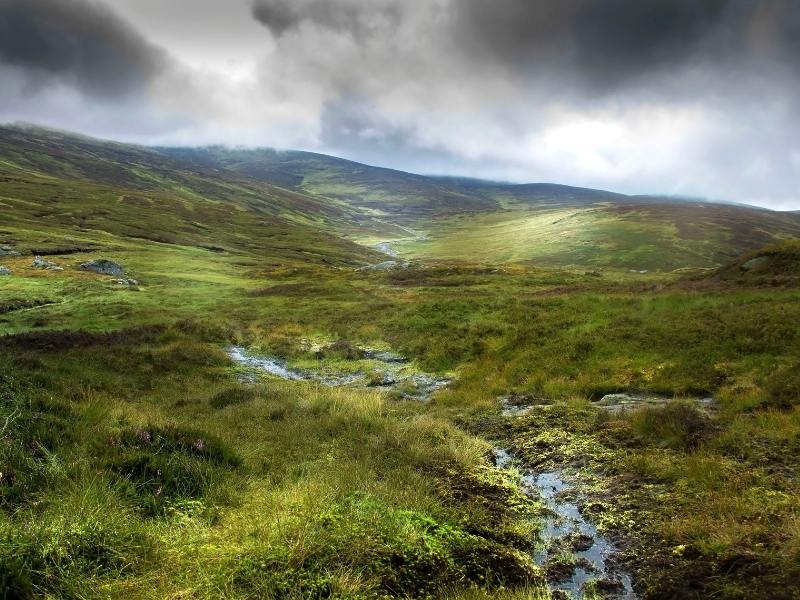
The largest national park in the UK, the magnificent Cairngorms National Park covers more than 1,700 square miles. It spreads across several counties: Highland, Aberdeenshire, Moray, Angus, and Perth and Kinross.
The National Park boasts stunning scenery and terrific attractions. The namesake Cairngorm Mountains are a paradise for hiking, mountain biking, climbing, canoeing, and (in the winter) skiing. With a whopping 12 courses, golf enthusiasts won’t be disappointed, and thrill-seekers can get an adrenaline rush at Landmark Forest Adventure Park or the Highland Fling Bungee.
Diverse flora and fauna call the area home, including several rare species, and you can visit the UK’s only herd of free-roaming reindeer.
Observe diverse fascinating creatures at the Highland Wildlife Park (admission £18.50 adults / £12.50 children, opening hours April–October 10 am–5 pm, July–August 10 am–6 pm, November–March 10 am–4 pm), and learn more about local culture and traditions at the Highland Folk Museum (free admission, open April–October 10.30 am–4 pm and closed over the winter).
From the Balmoral Estate, Ruthven Barracks, and Braemar Castle, to The Braemar Highland Games Centre and Tomintoul and Glenlivet Discovery Centre, there are many attractions where you can get a history or culture fix. And, there are six whisky distilleries where you can sample a dram too.
Major towns and villages throughout the Cairngorms National Park include Aviemore, Tomintoul, Kingussie, Grantown-on-Spey, Braemar, Ballater, Killiecrankie, and Glenlivet, each offering different experiences.
How to get to Cairngorms National Park
- By car: Driving around the Cairngorms National Park offers the greatest flexibility and accessibility. Follow the A9 down from Inverness, which traces the edge of the park in the Strathspey and Badenoch regions.
- By bus: Regular bus services travel between Inverness and various destinations throughout the national park, while local buses and minibuses link local towns and villages.
- By train: Trains from Inverness stop at Aviemore, Kingussie, and at stations through the Strathspey and Badenoch regions. For something a bit different to the norm, why not board the quaint Strathspey Steam Railway to travel between Aviemore and Broomhill?
Speyside Whisky Distilleries
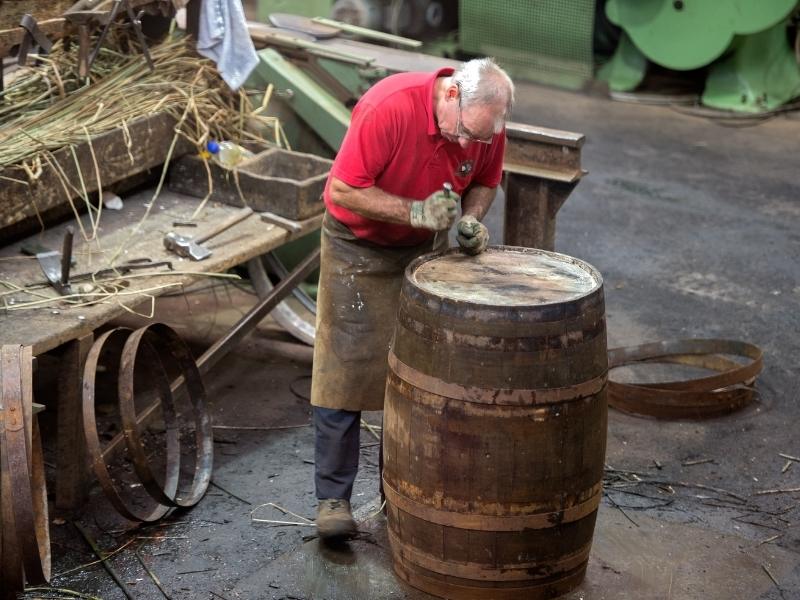
Located in the northeast of Scotland, Speyside surrounds the River Spey. The area is most famous for whisky production; it’s home to more than 50 distilleries!
Occupying one of the warmest parts of Scotland, the fertile terrain is perfect for growing barley, while there’s also an abundance of fresh mountain spring water. Put together, the end result is some of the finest malt whiskies in the country.
True whisky aficionados can follow the Malt Whisky Trail, which includes seven working distilleries, the historic distillery of Dallas Dhu, and Speyside Cooperage.
Established in 1786, Strathisla is the region’s oldest distillery still in operation. The Glenfiddich Distillery and the Glenlivet Distillery produce the two highest-selling single malt whiskies across the globe.
Other well-known Speyside distilleries include Cardhu, Glen Grant, Benromach, Glenfarclas, Cragganmore, Macallan, and Glen Moray.
Tour distilleries of all kinds, big and small, old and modern, and learn more about the ingredients and processes needed to produce fine Scottish whiskies. Discover the area’s long whisky-producing heritage, sip some of Scotland’s best firewater, and purchase bottles to enjoy at home.
How to get to Speyside
- By car: Drive east from Inverness and you’ll reach Speyside. The A96 leads to the top of the region, while the A9 is convenient for reaching distilleries in the southern part of Speyside. Just be sure to have a designated driver who doesn’t mind missing out on tasty samples!
- Why not take a tour to enjoy the distilleries?
Isle of Skye
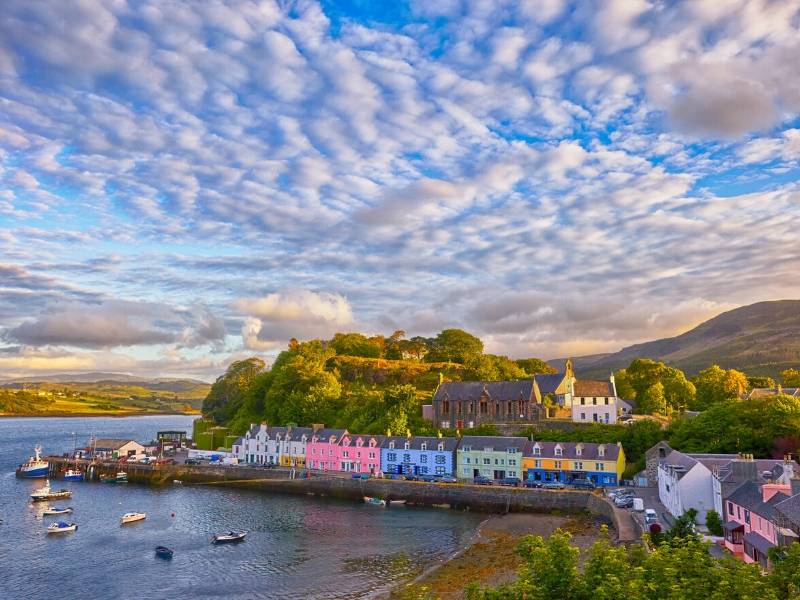
The Isle of Skye is Scotland’s biggest island. Lying just off Scotland’s west coast (and conveniently connected to the Scottish mainland by bridge), it’s a terrific destination for an epic road trip.
Famous for its beautiful scenery and amazing natural attractions, Skye is among the top-visited destinations in all of Scotland. It’s often referred to as Scotland in miniature, thanks to boasting examples of Scottish best natural features in a relatively compact area.
Think glistening lochs, rugged mountains, striking waterfalls, superb beaches, wild landscapes, charming fishing villages, and cultural experiences aplenty.
A haven for outdoor enthusiasts, the island offers incredible hiking at places like the iconic Old Man of Storr and the unusual geological landscapes of Quiraing. Kilt Rock is a fine example of Mother Nature’s handiwork, while Skye’s gorgeous waterfalls include the enchanting Fairy Pools, Lealt Falls, and Rha Falls.
Skye’s amazing beaches include Claigan Coral Beach, Talisker Beach, An Corran Beach, and Sound of Sleat Beach, while beautiful island lakes include Alsh, Leathan, Brittle, Harport, and Coruisk.
The award-winning Skye Museum of Island Life is a must for anyone interested in local history and heritage, offering incredible insights into traditional crofting life. Admission is £5 for adults and free for those under 15s. The museum is open from Easter to September, Monday to Saturday, 9.30 am to 5 pm.
The jaw-dropping Dunvegan Castle has a history that dates back to the 1200s, and is the only Highland castle to have been owned by the same family for eight centuries. The impressive exteriors contain a wealth of delights, with rich antiques and artworks in ornate rooms. You can also learn more about interesting legends of the MacLeod clan.
Take time to explore the exquisite gardens too, and perhaps also hop on a boat trip to spot seals. Entry to the castle and gardens costs £14 for adults and £9 for children under 15. Under 5s are free. The castle is open daily between mid-May and mid-October from 10 am to 5.30 pm.
The island’s main town of Portree is worth visiting too, known for its picturesque harbour and pier designed by notable Scottish civil engineer, Thomas Telford.
How to get to the Isle of Skye
- By car: Covering some 80 miles and taking around two hours, the drive from Inverness to Skye Bridge winds through some of the most spectacular scenery in the Highlands. There are two main ways you can drive to Skye from Inverness.
- Either head north on the A9, and then take the A835, A832, A890 and A87, or travel alongside Loch Ness on the A82 and later pick up the A87. Both routes run through mountains and past beautiful lakes.
- By tour:
Read more – Isle of Skye Travel Guide / Isle of Skye itinerary / Best Isle of Skye tours
Dunrobin Castle
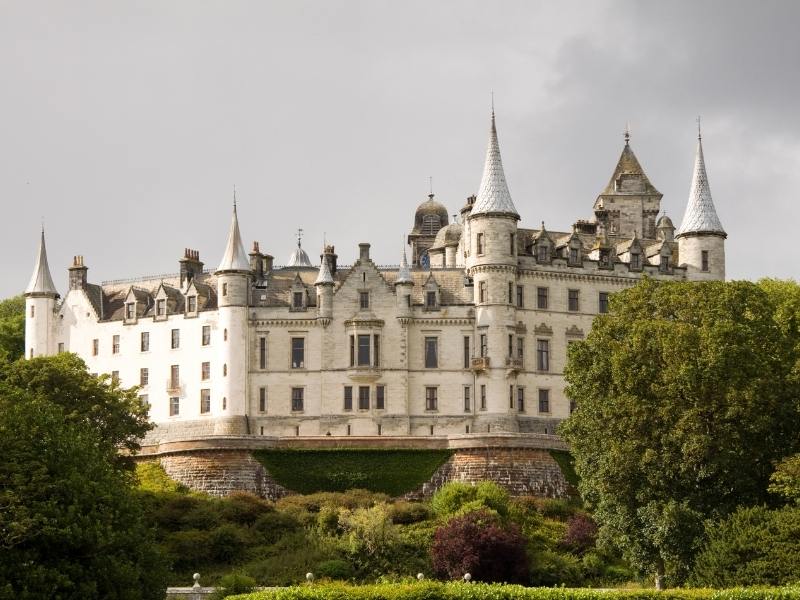
Located around a 20-minute drive north of the historic town of Dornoch, the magnificent 189-room Dunrobin Castle is the largest of Scotland’s great houses in the northern Highlands. It’s the historic family seat of Clan Sutherland and the Earl of Sutherland.
Occupying the site of older fortresses, the lands have seen many notable events. From a takeover by supporters of Robert the Bruce and brutal murders to an attack during the Jacobite Rising of 1745 and a devastating fire, much has taken place in this area throughout history.
The present fairy-tale-like building features French-inspired architectural features, towers, turrets, and imposing walls. The mighty entrance tower stands 135 feet tall and the clock tower is just ten metres shorter.
A relatively small section inside is still used by the Sutherland family, with many parts now open to visitors. Step through the elegant doorway to admire the beautiful interiors, complete with fine tapestries and paintings, antiques, and lavish furnishings. The enormous staircase, panelled dining hall, and library are sure to impress.
Outside, you can stroll through the handsome formal gardens, soak up the splendid vistas, watch impressive falconry displays, and peer into the depths of St. John’s Well.
Admission costs £12.50 for adults / £7.50 for children. The castle is open daily from the start of May to the end of October and closed over the winter months. Opening hours are 10 am to 5 pm from May to September, while October has shorter opening times between 10.30 am and 4.30 pm.
How to get to Dunrobin Castle
- By car: Driving to Dunrobin Castle offers the quickest travelling time, with a journey of around an hour and ten minutes. The drive is easy, following the A9 northbound, with signposts directing you to the entrance. Ample on-site parking is available.
- By bus: Stagecoach Highland operates direct bus services twice a day from Inverness bus station to Dunrobin Castle (Station). The bus journey takes around an hour and 25 minutes.
- By train: ScotRail services from Inverness to Wick stop at the train station near Dunrobin Castle. The castle is just a five-minute walk from the station. The train journey takes around two hours and 20 minutes.
Fort William, the Glenfinnan Monument and Viaduct (+ a trip on the Jacobite steam train)
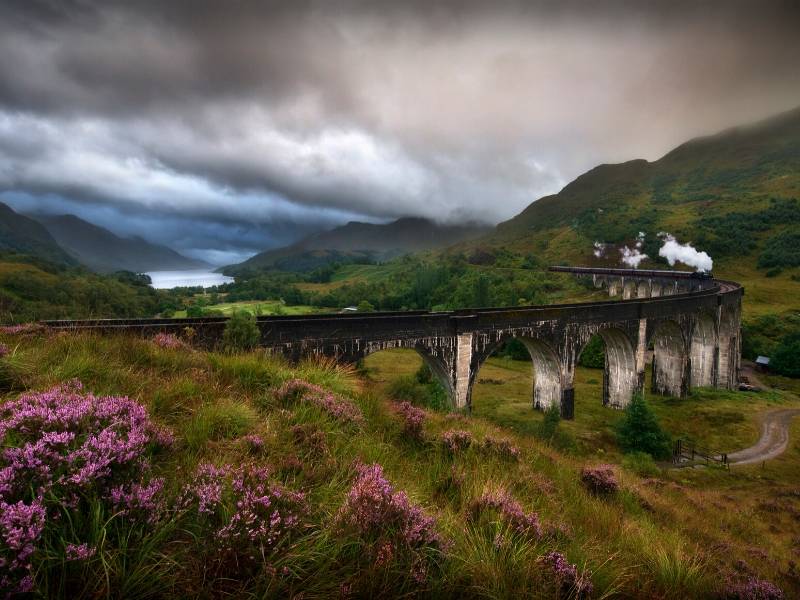
Fort William is commonly referred to as the Gateway to Ben Nevis. The surrounding area is a paradise for fans of hiking, mountain biking, and watersports, and there’s a ski resort during the winter months. It’s not nicknamed the UK’s Outdoor Capital for nothing!
The second-largest settlement in the Highlands (after Inverness), local Fort William attractions include the West Highland Museum, the Old Inverlochy Castle, Neptune’s Staircase (a series of locks along the Caledonian Canal), and St. Andrew’s Church.
Fort William is also a convenient starting point to see the striking Glenfinnan Viaduct and neighbouring Glenfinnan Monument. (Around a 30-minute drive from Fort William.)
The arched Glenfinnan Viaduct was built in the 1890s. It rises 30 metres above the ground, standing out against the dramatic backdrop of towering greenery-covered mountains. A spectacular sight at all times of day, it’s particularly impressive to view the old-fashioned Jacobite steam train as it crosses the viaduct with a flourish of steam billowing behind.
The viaduct and train have become especially famous after being featured in the Harry Potter films as the Hogwarts Express!
The Harry Potter train crosses the viaduct twice a day during summer on its route between Fort William and Mallaig. Services are reduced during the winter and timetables can change—check times in advance to avoid disappointment. Tip: Arrive at the car park in plenty of time before the scheduled crossing time as it can get full very quickly!
There are two main viewing points, both free to enjoy (though you’ll need to pay £3.50 to park in the National Trust car park if you’re not a member). One is right next to the National Trust visitor centre, and the other requires a short walk of around 20 minutes but offers closer views.
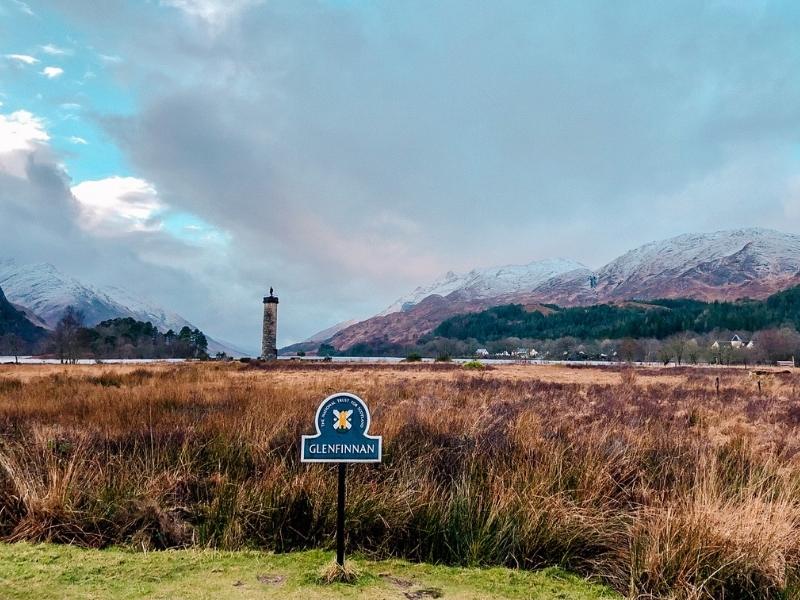
The visitor centre (free) has a small exhibition (seasonal opening hours apply) about the 1745 Jacobite Rising. It was this very spot where the movement began. People gathered here from across the Highlands to vow their support for Bonnie Prince Charlie in his quest to take back the British throne for a Stuart monarch.
The soaring Glenfinnan Monument, topped with a solo Highlander, is a moving tribute to the clansmen who lost their lives fighting for the Jacobite rebellion. You can admire the monument from ground level for free at any time. You can also climb to the top for fabulous views of the viaduct, lake, and mountains.
The monument is open on selected days of the week between April and December (it’s closed from January to March). Opening hours vary, so check the National Trust for Scotland’s website before planning your trip. Admission costs 5 GBP for adults and 3 GBP for children. It’s free for members of the National Trust for Scotland.
For even more Harry Potter and Highland fun, how about boarding the iconic train for a journey through majestic scenery and over the viaduct? It’s often said to be among the greatest rail journeys in the world!
How to get to Fort William
- By car: The easiest (and quickest) way to drive from Inverness to Fort William is to follow the A82 south. It’s one road for most of the way and the road runs alongside the majestic Loch Ness.
- By bus: Regular bus services operate daily between Inverness and Fort William, with an average travel time of two hours. There are several operators to choose between, with departures at various times of the day.
- By train: There are no direct train services between Inverness and Fort William. Due to stopovers, train travel between the two destinations can take anywhere between seven and ten hours which make it impossible to do as a day trip from Inverness.
The Black Isle
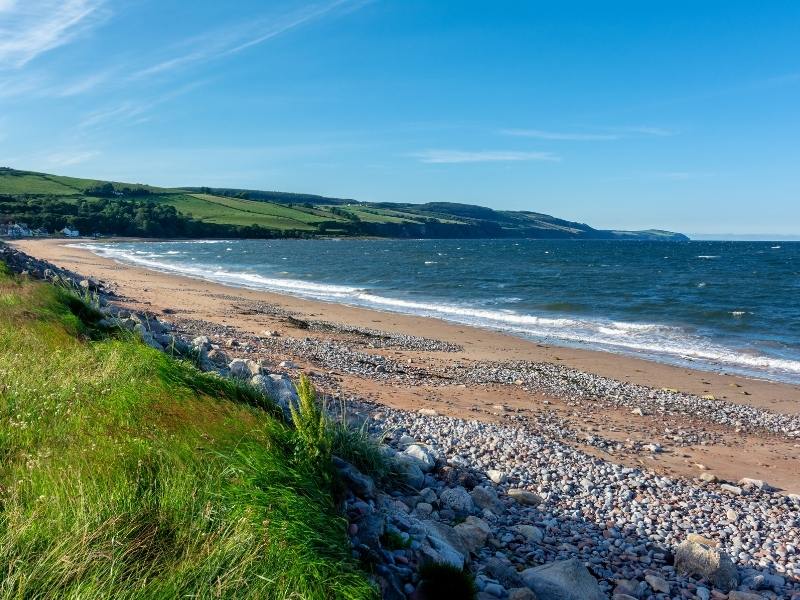
Despite the name, the Black Isle isn’t actually an island; it’s a peninsula within the area of Ross and Cromarty. The Black Isle borders the Moray Firth, Beauly Firth, and Cromarty Firth.
It’s known for being a top spot for wildlife watching. Head to Chanonry Point for awesome opportunities to watch dolphins up close. Although they are there all year round and all through the day, the best time for dolphin spotting is right after low tide. Alternatively, take a boat trip from Cromarty or Avoch.
There are several castles across the peninsula, including Redcastle, Kinkell Castle, Castlecraig, and Kilcoy Castle. The stately Cromarty House is a fine mansion from the 1700s.
Other great places to visit include the eerie clootie well at Munlochy, Glen Ord whisky distillery, Fairy Glen Falls, Fortrose Cathedral, Black Isle Brewery, and Hugh Miller’s Birthplace.
How to get to the Black Isle
- By car: Travel north out of Inverness and cross the Kessock Bridge to reach the Black Isle. It takes around 45 minutes to reach the top of the peninsula.
- By bus: Regular bus services run between Inverness bus station and various destinations around the peninsula, including Cromarty and Fortrose.
Eilean Donan Castle
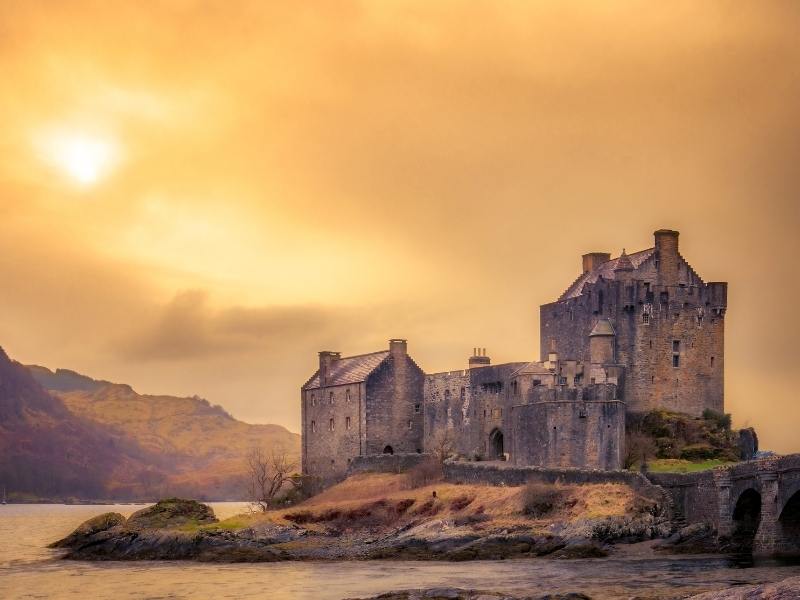
Sitting on a small tidal island at the point where three lochs meet and near the Isle of Skye, the picturesque Eilean Donan Castle is one of the most photographed castles in all of Scotland and ome of the most popular day trips from Inverness.
A major stop along the North Coast 500 tourist route, the stunning castle has been featured in several movies, including Bonnie Prince Charlie (1948), Highlander (1986), and The World is Not Enough (1999).
The original castle was once a stronghold of the Mackenzie Clan, but was destroyed by the government in 1719. Today’s architectural beauty dates back to the 20th century and is a reconstruction of the original.
There are several viewpoints where you can admire the water-surrounded castle framed by gorgeous Highland scenery for free. If you do want to peek inside, you’ll find period furnishings and décor and artifacts from the Jacobite times.
Admission costs £10 for adults, £6 for children, and it’s free for those under 5. The castle is usually open daily between February and December (closed January), although seasonal opening times apply and it may be closed for special events. Check opening hours in advance.
How to get to Eilean Donan Castle
- By car: It takes around one hour and 50 minutes to drive from Inverness to Eilean Donan Castle. Driving instructions are similar as for the Isle of Skye (above).
- By bus: You can reach Eilean Donan Castle by bus from Inverness, with a change at Seven Heads Store. Catch the Number 919 for Fort William then switch to the Number 915 for Uig, and get off at Bridge Road End. The castle is a five-minute walk from the bus stop.
- By train: You can catch a direct train from Inverness to Kyle of Lochalsh in around two hours and 40 minutes. From there, you would need to catch a bus or take a taxi for the remaining 8.5 miles to the castle.
Fort George
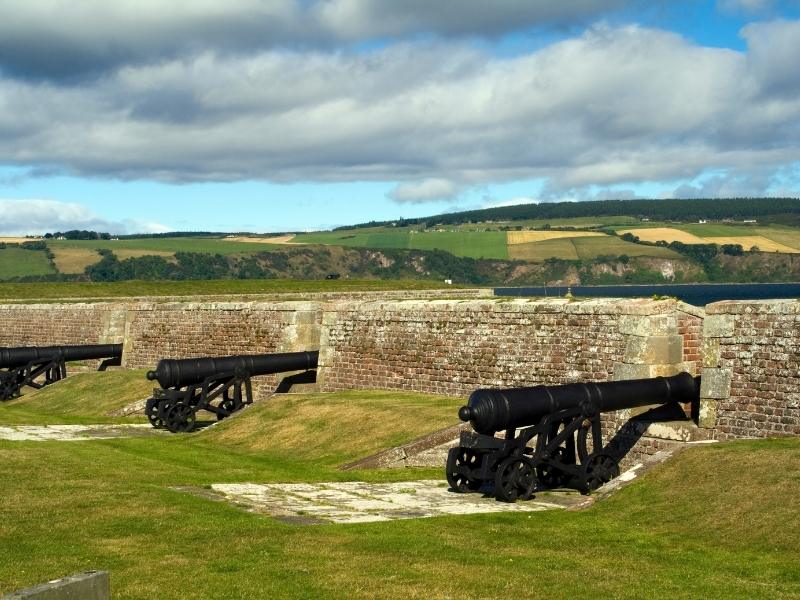
Fort George offers a very enjoyable day out from Inverness. Once one of the mightiest fortresses in Europe, it was constructed as a military base after the Battle of Culloden.
The huge outer walls contain various attractions and exhibits. Discover the fort’s past at the Highlanders Museum, see how soldiers lived in times gone by in the barracks, soak up the tranquillity of the garrison chapel, and marvel at the large weaponry collection in the grand magazine.
As well as being a top attraction for history lovers, Fort George is a terrific place to try and spot dolphins swimming in the sea.
Managed by Historic Environment Scotland, admission to Fort George costs £9 for adults and £5.40 for children. There’s no charge for children under 5 and members of Historic Environment Scotland.
How to get to Fort George
- By car: Fort George lies to the northeast of Inverness city centre, just beyond Inverness Airport. It is easy to access along the A9 and B9039, and there’s on-site car parking.
- By bus: Frequent buses travel between Inverness and Ardersier, one-mile walk from the castle.
Elgin and Nairn
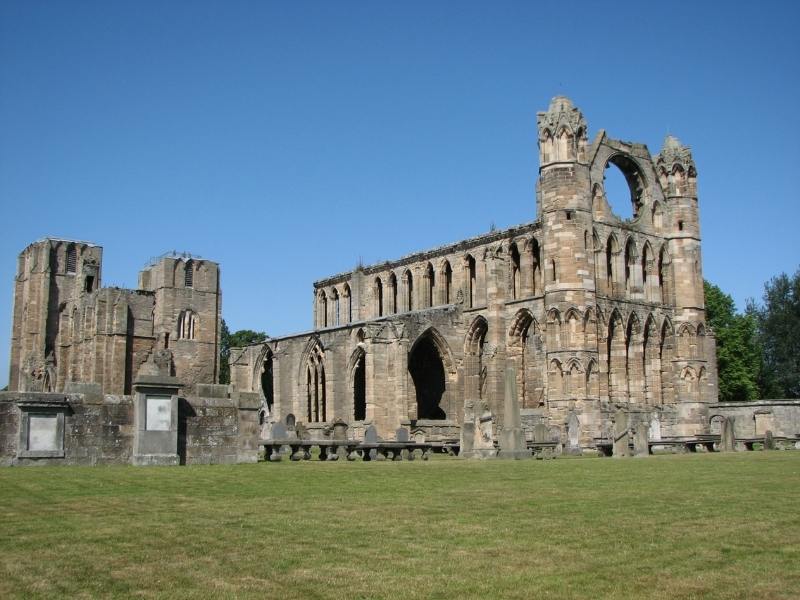
Elgin and Nairn are two interesting towns to the east of Inverness. The two towns lie some 22 miles apart, both close to the coast.
Hotspots in Elgin include Elgin Museum, several distilleries, and the now-ruined Elgin Cathedral, said to have once been one of the most beautiful and significant churches in all of Scotland.
Nairn is known for its lovely beaches, from where you may spot dolphins swimming through the waves and dolphins basking on the rocks. If you’re lucky, you may even catch sight of minke whales. There are also golf courses where you can perfect your swing.
Getting to Elgin and Nairn
- By car: Both Elgin and Nairn are connected to Inverness by the A96. You’ll reach Nairn first, in around 27 minutes, then Elgin is a further 35-minute drive away.
- By bus: The X10 bus service connects Inverness and Nairn in around 33 minutes, with frequent services throughout the day. From Nairn, you can catch the Number 10 bus onto Elgin.
- By train: Direct trains travel between Inverness and Nairn, with a journey time of just around 16 minutes. Elgin also has a train station—it takes 40 minutes from Inverness and 24 minutes from Nairn.
Cawdor Castle
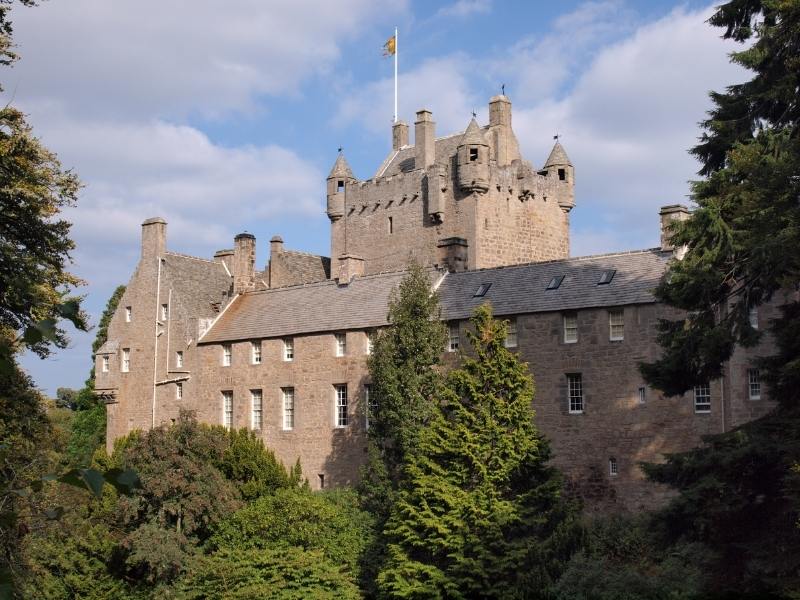
Cawdor Castle is one of the best places near Inverness for lovers of Shakespeare—the atmospheric castle has links to Macbeth! King Macbeth was, in the play, made the Thane of Cawdor.
The traditional home of the powerful Campbells of Cawdor, a castle has stood at this site since at least the 1100s. The present-day building dates back to the 1400s, with many alterations and additions throughout the years.
The foreboding walls were curiously built around a holly tree. Now dead, the tree is surrounded by legends and myths.
Visitors can admire the handsome exteriors before stepping inside to marvel at historic and elegant opulence. Don’t miss exploring the beautiful gardens before you leave—the Walled Garden is particularly impressive.
Cawdor Castle is open every day (subject to closures for private events) from May to early October. Opening hours are 10 am to 4 pm and admission costs £13.50 for adults / £7.50 for children / under 5s free.
Getting to Cawdor Castle
- By car: Close to Inverness Airport, follow the A96 east from Inverness then pick up the B9006 at Brackley. Signposts direct visitors to the castle, and you should reach the castle in around 25 minutes.
- By bus: You can reach Cawdor Castle by bus via Nairn, using first the Number 10 (bound for Aberdeen) and then the Number 113. The journey takes approximately one hour and 20 minutes.
- By train: Catch the train to Nairn then continue on the Number 113 bus. The total travelling time is around 50 minutes.
Plan your visit to Inverness
With all of these great day trips from Inverness to choose from you really are spoilt for choice! Read more about visiting Scotland and Inverness in the articles below:
- Inverness Travel Guide
- Where to stay in Inverness
- Things to do in Inverness
